Fidel Castro’s March to Victory
When the Cuban Revolution succeeded in January 1959, Fidel Castro had a problem: he was 550 miles from Havana. Undeterred, the would-be leader turned his journey to the capital into a victory march.
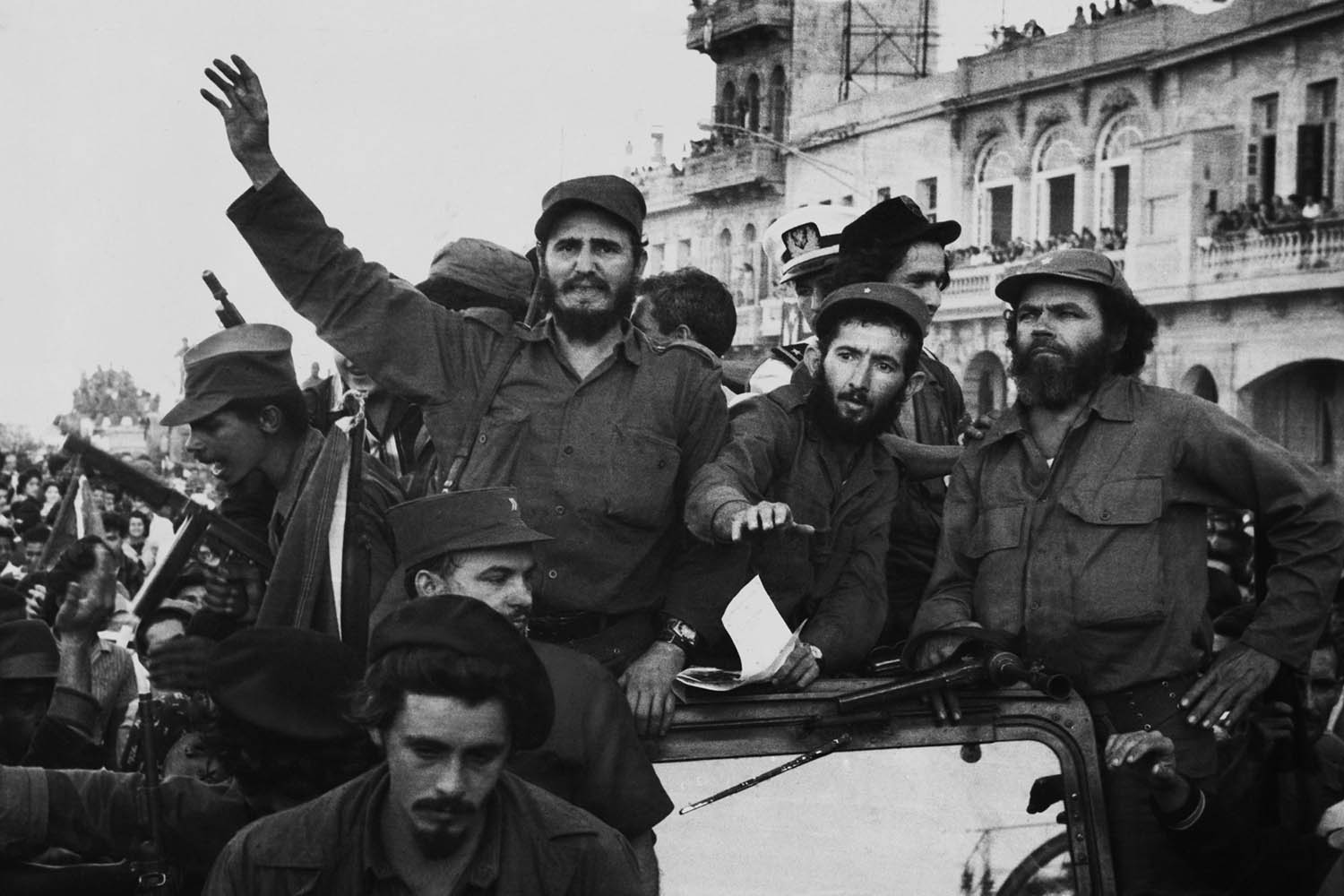
Fidel Castro and his fellow revolutionaries enter Havana, 8 January 1959.
When the Cuban dictator Fulgencio Batista fled Havana in the early hours of 1 January 1959, Fidel Castro was 550 miles away, at the opposite end of the island. Batista’s flight had caught him by surprise. While Castro was stuck in the south-eastern hinterland, his rivals for power – the regime’s top brass and the commanders of partially-allied guerrilla forces – were headed north-west to the capital. Knowing he would lose the race, Castro turned his positional weakness into a strength and embarked on an eight-day, island-long victory parade or caravana. His task was to ensure he would be Batista’s successor.
General Batista had been a progressive, democratically elected president in the 1940s, but returned to power in 1952 through a military coup. He cancelled elections, suppressed dissent and struck deals with the US Mafia for personal financial gain at ordinary Cubans’ expense. With no electoral avenue to change the status quo, opposition groups turned to violent insurrection.
Castro’s revolt began on 26 July 1953 with a disastrous attack on the barracks in Santiago, the major city in Eastern Province. Castro was imprisoned. Upon his release he went into exile in Mexico, where he plotted a guerrilla insurgency to be headquartered in the mountains of Eastern Province. At that point, the Cuban rebellion centred on urban resistance led by the Revolutionary National Action (which merged into Castro’s 26 July Movement, or M26) and the Revolutionary Directorate.
In late 1956 Castro’s rag-tag band of rebels sailed to their proposed hideout, the Sierra Maestra. A few months later, the Directorate attacked the presidential palace in Havana. Batista narrowly escaped but the Directorate’s leader, José Antonio Echeverría, was killed. The rump of the Directorate fled to the Escambray mountains in central Cuba and began its own guerrilla campaign, independent of Castro. Disputes within the Directorio saw the formation of a splinter group, the Second Front. The three guerrilla forces shared a common enemy – Batista – but little more.
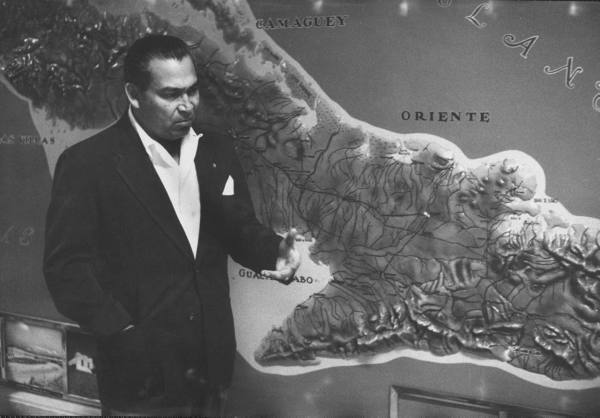
In the summer of 1958 Batista launched a surge in the east against Castro. Despite its vastly superior force, the army was unprepared for guerrilla warfare and suffered major defeats that allowed the M26 to move westward. When the revolutionaries captured the key cities in central Cuba, Batista fled to the Dominican Republic, leaving behind a power vacuum. Belying his inferior location, Castro’s tour was designed to make sure it was he who filled it.
The revolution begins now. It will not be like 1898, when the North Americans came and made themselves masters of our country. For the first time, the republic will be free.
Castro’s caravana began that 1 January with a speech before 200,000 in Santiago, the stronghold of the M26. Helped by his gift for public relations and Che Guevara’s broadcasting skills on rebel radio, Castro came out of hiding to a saviour’s welcome. As his propagandist Carlos Franqui recalled: ‘We, the “bearded ones”, came down from the mountains like the saints of old. People rushed to meet us. They were wild; they touched us and kissed our filthy facial hair … This was a real New Year’s party.’
That night, Castro named Santiago the capital of Cuba. It was not his decision to make but the implication to his rivals was clear. The seat of power was wherever he was. However, Castro knew he needed more than support in the east to shape the nation’s future. He needed Havana, but the Second Front and the Revolutionary Directorate had got there first.
These partially allied yet distrusted rebels were not Castro’s only headache. Ramón Barquín – a colonel jailed by Batista for attempting a coup in 1956 – was released following the dictator’s departure. To Castro’s chagrin, Barquín overthrew Batista’s appointed successor and took charge of Havana’s Camp Columbia, the largest garrison in the country. With anti-Batista credentials and control of Columbia, Barquín was a serious rival for power. Trying to secure public opinion, Castro declared on rebel radio, ‘We will never accept any solution other than a civilian government.’
Castro sent Guevara’s and Cienfuegos’ columns on to Havana and decided to process through the island at his own pace. To achieve his aims, the journey would be part triumphant tour, part political campaign.
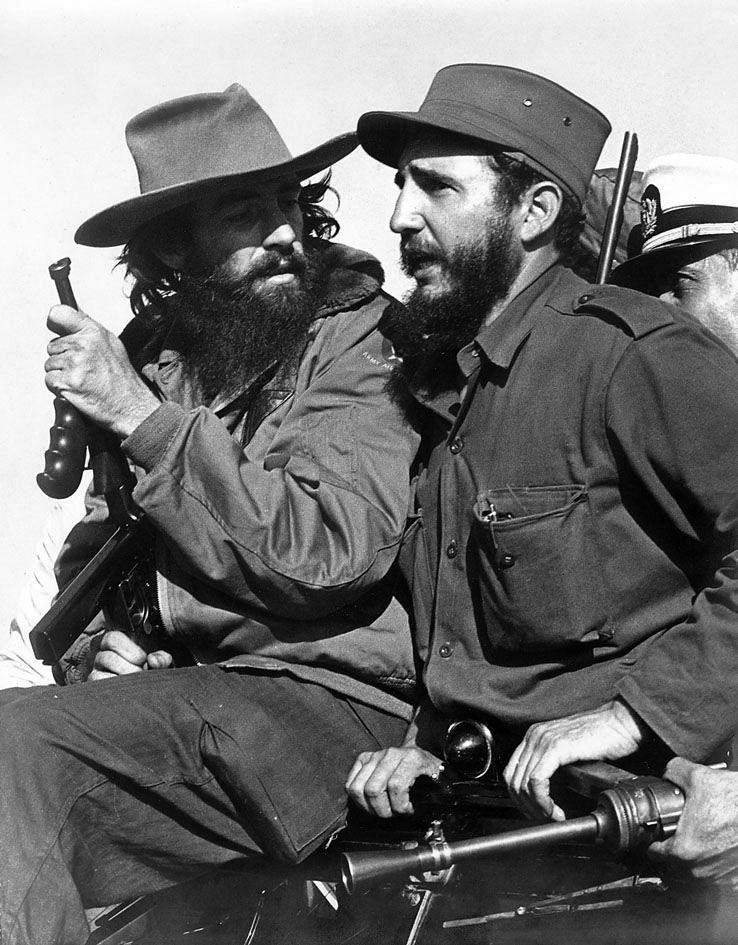
With an amulet of Our Lady of Charity around his bison neck and an M-2 rifle over his broad shoulder, Castro set off from Santiago, travelling in an open-top Jeep. Stopping at the major towns en route to Havana, he set out his vision for a new Cuba in speeches that would last for hours.
Audiences were soon won over. According to the British ambassador, the crowds – who lined roadsides, packed squares and wanted nothing more than to touch a man who, extraordinarily by Cuban standards, stood at 1.90m – saw in him nothing less than ‘a mixture of [Cuban independence icon] José Martí, Robin Hood, Garibaldi and Jesus Christ’.
Castro’s caravana had begun well but he had not discounted the possibility of having to fight a battle for the capital. At each stop, he encouraged more and more revolutionaries, former soldiers and hangers-on to join his brigade.
For Castro, there was a private purpose to the public speeches, the waves and the embraces. This was his only chance to make sure it was he who shaped Cuba’s future. Behind the apparent spontaneity were political machinations and a plan to convince Cubans that he was no longer a mysterious outlaw buried deep in the mountains, but a ready-made statesman. Despite Castro’s declarations to the contrary, it would have been impossible to listen to his orations, which included policies on everything from women’s rights to agrarian reform, and not see a man positioning himself for politics.
As agreed by the factious rebel coalition of insurgent groups and financiers, Manuel Urrutia, a fair-minded judge, liberal even at the height of the Batista dictatorship, was named president of the republic. All the rebel parties knew he was too politically green to exercise control. Castro’s role as commander of the armed forces had also been settled in the pre-victory pacts and he told the crowds he would remain in this post until the president no longer wanted him.
Castro knew the caravana was critical to cementing his political future. He had plenty of enemies – both in the ancien régime and among its would-be successors – and given the need for as much public visibility as possible, the caravana would also need to be a feat of security. Privately, he named his brother Raúl and Commander Huber Matos heirs to his leadership. But that leadership was not yet the leadership of Cuba. Surging ahead in the battle for hearts and minds in the east, Castro’s hand was promising. But it was not yet decisive.
First into Havana, whether through idealism or naivety, the Second Front did not take army bases or government buildings. Their leader, Eloy Gutiérrez Menoyo, stressed that there was still a chance of a military coup against the revolution and that the Second Front must patrol the capital’s streets.
The Revolutionary Directorate had other ideas. It acquired weapons from an army base, storing them at its old hub, the university, and took the presidential palace, the site of its major uprising against Batista in 1957. The rebels’ pre-victory agreements granted Castro military control after the war, but not political hegemony. The Directorate demanded reward for its long opposition to Batista.
As soon as the M26 legates arrived in Havana, Castro ordered them to take the garrisons. Che Guevara took the colonial fortress looking over the harbour and Camilo Cienfuegos went to Camp Columbia to negotiate with Barquín. Realising that the rebels’ popularity far exceeded his own and that army morale was low after a series of defeats to numerically inferior forces, Barquín was cornered. He handed Cienfuegos and the M26 the most important barracks in Cuba.
Victory for the rebel coalition was now confirmed. The insurrection was over, but the shape the revolution would take was still uncertain.
In the post-Batista posturing, Castro’s charisma and determination to secure the nation’s critical infrastructure put him in the dominant political and military position. Now that he was unquestionably the most powerful figure in Cuba, for the rest of his journey he focused on ensuring it was he who directed the outcome of the revolution.
To further his plan, the caravana made a significant detour off the Central Highway to the southern city of Cienfuegos. It was an important naval base and Castro wanted to pay homage to its marines, who had revolted against Batista in 1957. As importantly, the city had been liberated by the Second Front. As the M26 controlled every other major garrison, prison, port and airport in Cuba, Cienfuegos was somewhere Castro was relatively weak. Worse still, it was being governed by a gringo, William Morgan. Castro wasted no time in ordering him to submit, telling Morgan: ‘In Cuba there is only one triumphant revolution and no separate little groups.’
The United States officially recognised Urrutia’s new government a day later. In a note to President Eisenhower, Secretary of State John Foster Dulles wrote: ‘The Provisional Government appears free from Communist taint and there are indications that it intends to pursue friendly relations with the United States.’ For his part, Castro reiterated to foreign journalists that he didn’t ‘ambition power [sic].’
On the final morning of his journey, he stopped at Cárdenas to meet the family of José Antonio Echeverría, the late leader of the Revolutionary Directorate. As rivals, Castro had called Echeverría a ‘terrorist’. Now he hugged his crying mother and petitioned his sister to mediate with Echeverría’s successors.
By now, Castro was only 90 miles from Havana. The caravana was being televised and the capital had more sets per household than any city in the US. Havana was expectant.
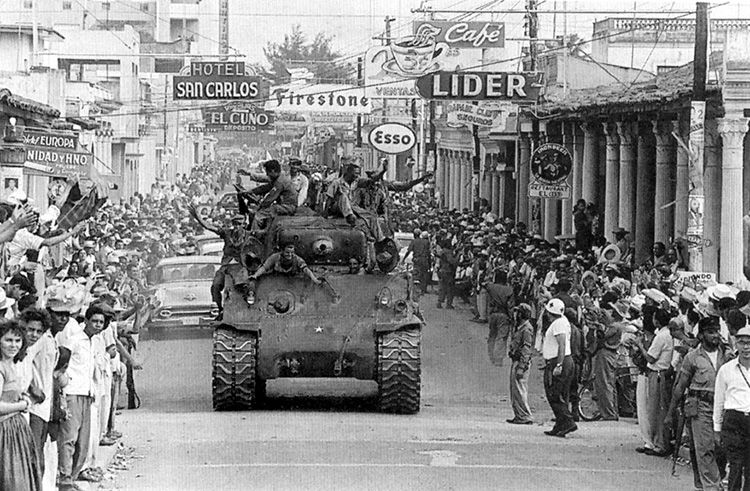
When Castro entered Havana ‘the crowds were so tumultuous and the ranks of marches so unruly that it was impossible to differentiate the procession from the audience,’ remembered photojournalist Burt Glinn, who lost his shoe and a camera in the converging mêlée. There were rebels sat on Chevrolet bonnets, human pyramids on tanks and peasants on horseback. From barefoot beggars and leathery shoe shiners to poorly dressed children, everyone was on the street, waving the caravana through the city. Amid the cacophony of sirens, horns, whistles, church bells and cannon-fire could be heard the chant, ‘Viva la revolución!’
Castro’s final stop on the caravana was Camp Columbia. His speech there was more sombre than triumphant. There were many challenges, but social democracy would prosper. Elections would be held. ‘It is not fair that the cult of personality and ambition endanger the destiny of the revolution,’ he said. ‘We cannot become dictators.’
Castro was speaking to the masses, but also to his opponents. The Revolutionary Directorate had handed over the presidential palace to Urrutia, but still had its weapons. ‘What are these weapons for?’ Castro asked. ‘Is there a dictatorship here? Are they going to be used against a free government that respects the rights of the people … when today there is no torture, no political prisoner, no assassination and no terror?’
Castro had cornered his rivals. As head of Cuba’s armed forces, his M26 was not about to abandon its weapons. It was the preeminent group and he was the preeminent leader.
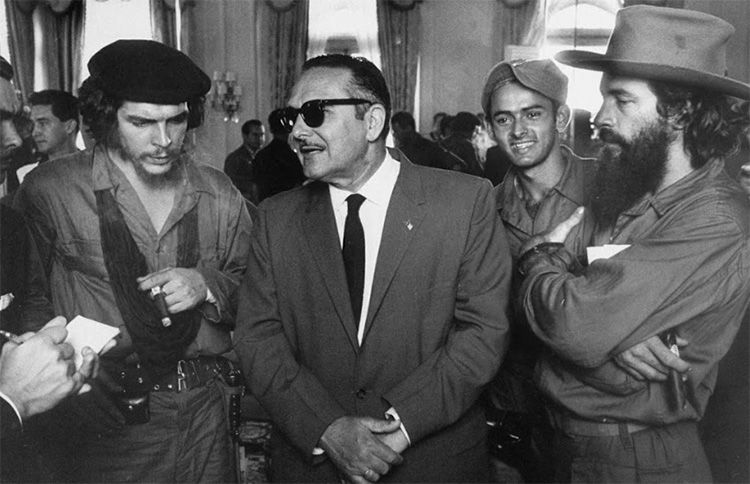
Outmanoeuvred, the Revolutionary Directorate disbanded. It gave up its arms, relinquished the university buildings and its officers took moderate roles in the new government. The leaders of the Second Front were consigned to army positions under the panoramic aegis of the commander in chief.
President Urrutia might have been the head of state (in the event, he lasted only half a year), but the caravana had conclusively shown who was really running Cuba. Castro understood the country better than anyone. Sensing an opportunity in his disadvantageous location, he produced a piece of theatre so grand in scale that it convinced Cubans he was the guarantor of a prosperous future.
It was his performance throughout the caravana that provided Castro with such a popular mandate that he was able to defy the democratic assurances he gave the Cuban public that night at Camp Columbia.
Little did the elated onlookers know, the effects of the caravana would reshape the politics of an entire continent and within four years, bring the world to the brink of nuclear destruction.
Daniel Rey is the author of ‘Checkmate or Top Trumps: Cuba’s Geopolitical Game of the Century’, runner-up of the 2017 Bodley Head & Financial Times essay prize.